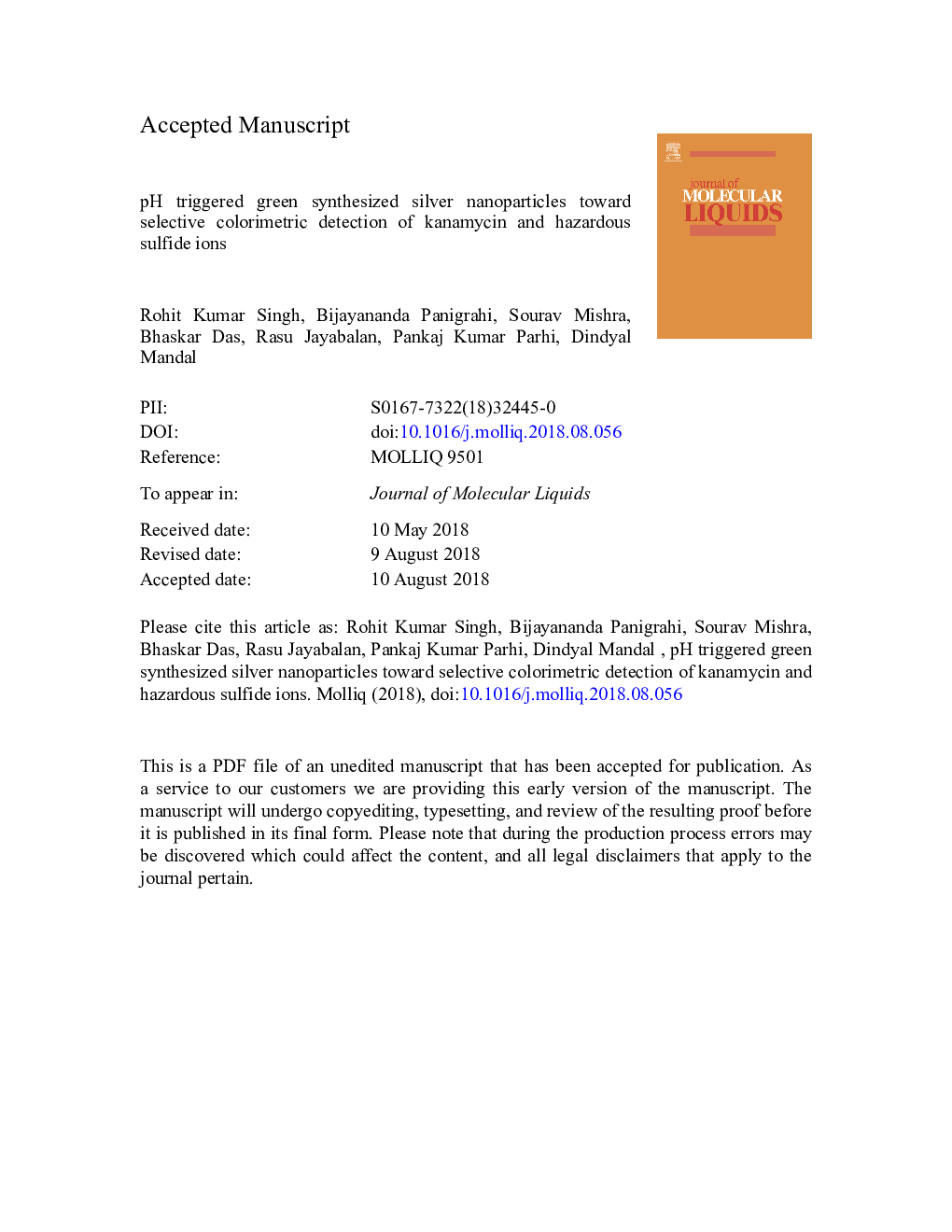| Article ID | Journal | Published Year | Pages | File Type |
|---|---|---|---|---|
| 7841609 | Journal of Molecular Liquids | 2018 | 36 Pages |
Abstract
The interaction among the biologically synthesized silver nanoparticles (AgNPs) and industrially useful antibiotic kanamycin or environmentally hazardous sulfide ions led to the development of a possible colorimetric sensor for the selective detection of kanamycin and sulfide ions. In this study, a facile green protocol toward the synthesis of silver nanoparticles (AgNPs) was established while Epigallocatechin gallate (EGCG) was used as reducing and stabilizing agents, for the first time. The as-synthesized nanoparticles were characterized by UV-visible spectroscopy, high resolution transmission electron microscopy (HR-TEM) and dynamic light scattering (DLS) techniques. Detection of kanamycin and sulfide ions was established based on the SPR technique. The yellow color of the AgNPs solution turned to reddish pink in the presence of kanamycin, accompanying the decrease in intensity of SPR band. In contrast, AgNPs solution turned to colorless upon the addition of sulfide ions. The sensitivity and selectivity of AgNPs toward other interference antibiotics/anions were studied. Moreover, the effect of the concentration of kanamycin and sulfide ions in the nanoparticle solution was investigated and the LOD (limit of detection) for kanamycin and sulfide ions were found to be 0.96â¯Î¼M and 1.62â¯Î¼M, respectively. The results indicate that the proposed technique is very efficient for the colorimetric detection of kanamycin and sulfide ions.
Related Topics
Physical Sciences and Engineering
Chemistry
Physical and Theoretical Chemistry
Authors
Rohit Kumar Singh, Bijayananda Panigrahi, Sourav Mishra, Bhaskar Das, Rasu Jayabalan, Pankaj Kumar Parhi, Dindyal Mandal,
